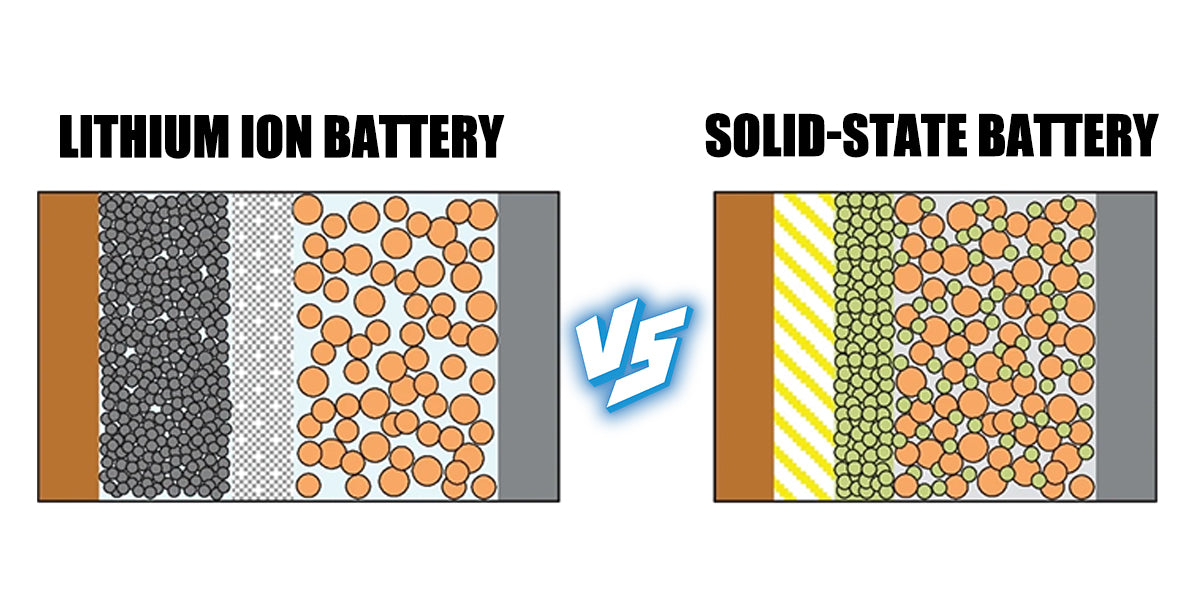Lithium iron phosphate (LiFePO4) batteries are becoming the go-to choice for reliable, long-term energy storage with unprecedented speed that you can't imagine. Why?
They often boast:
- Unique chemistry.
- Impressive performance.
- Financial sense, they make over the long haul.
No need to rack your brains to figure out LiFePO4. We are here to help!
What's the Secret to Their Long Life?
Well, for most of you, the specialized internal chemistry and design are the back-room boys. The materials inside are structured in a way that guarantees the battery remains incredibly stable and resilient, enabling it to endure long-term use without significant degradation.
Smart, Stable Chemistry
At the heart of these batteries is the cathode, made from lithium iron phosphate (LiFePO4). The formula uses abundant, non-toxic materials like iron and phosphate. This is a big deal because it means they don’t rely on controversial or less stable materials like cobalt and nickel, common in other types of lithium-ion batteries.
An Unshakable Crystal Structure.
The LiFePO4 cathode has a unique 3D crystal structure called an "olivine." Think of it like a super-strong, rigid honeycomb that holds the lithium ions. As the battery charges and discharges, this structure barely changes in shape or size. Tiny fractures and stress never build up inside, which allows the battery to last through thousands of cycles with no drop in performance.
Exceptional Heat Resistance.
Because the chemical bonds in the LiFePO4 structure are incredibly robust, these batteries can maintain their stability in high-heat environments. While other lithium battery types break down around 150°C (302°F), the LiFePO4 battery stays intact even at temperatures exceeding 270°C (518°F). This remarkable temperature tolerance ensures that thermal runaway, a dangerous condition where batteries overheat uncontrollably, is extremely unlikely. Essentially, these batteries are fire-resistant and virtually incapable of igniting, even if damaged.
Understand Battery Cycle Life
As regards the cycle life, LiFePO4 batteries truly shine:
- LiFePO4: 4,000 to 15,000 cycles.
- NMC or LCO (Other Lithium-ion): 300 to 1,000 cycles.
- Lead-Acid: 300 to 500 cycles.
What does this mean?
A typical LiFePO4 battery can last 10 years or more, while a lead-acid battery often needs replacing every 3 to 5 years.
Nothing else can be compared to LiFePO4 batteries in ROIs in the long run.

A Comparative Glance: LiFePO4's Economic Edge in Solar Storage
While LiFePO4 batteries often have a higher initial purchase price, their Total Cost of Ownership (TCO) reveals they are a superior long-term investment. TCO often refers to all costs over an asset's lifecycle, including purchase price, replacements, maintenance, and energy costs.
If comparing LiFePO4 and lead-acid batteries, the TCO components differ significantly:
- LiFePO4 batteries have a higher upfront cost.
- A single LiFePO4 battery can last as long as 6 to 11 lead-acid batteries, and the repeated cost of replacing lead-acid batteries dominates their TCO.
- LiFePO4 batteries are virtually maintenance-free. Flooded lead-acid batteries require regular labor for watering, cleaning, and managing harmful gas emissions.
- LiFePO4 batteries have a superior round-trip efficiency of around 95%, compared to 80-85% for lead-acid. This means less energy is wasted, lowering electricity costs.
Check out the table that provides an illustrative TCO comparison for a 10-year solar energy storage scenario.
| Cost Component | LiFePO4 (1 Battery) | Flooded Lead-Acid (11 Replacements) | AGM Lead-Acid (6 Replacements) |
| Initial Purchase | $800 | $250 | $350 |
| Initial Labor | $50 | $50 | $50 |
| Replacements Required | 0 | 11 | 6 |
| Battery Replacement Cost | $0 | $2,750 | $2,100 |
| Replacement Labor Cost | $0 | $550 | $300 |
| Maintenance Cost | $0 | ~$500 | ~$100 |
| Charging Cost (Energy Waste) | $281 | $334 | $314 |
| Total Cost of Ownership (10 Yrs) | ~$1,131 | ~$4,434 | ~$3,114 |
Broader Benefits of LiFePO4 Battery Longevity
The value from the long life of LiFePO4 batteries translates into practical benefits listed as follows, beyond direct economic savings:
- A longer lifespan means fewer replacements and less system downtime. Which holds the key to mission-critical systems like hospital backups and remote, off-grid homes.
- LiFePO4 batteries are a "fit and forget" technology. They do not require the periodic watering or terminal cleaning mandatory for flooded lead-acid batteries, eliminating labor costs and safety risks associated with handling acid and explosive gases.
- Because a single LiFePO4 battery can outlast multiple generations of lead-acid batteries, its adoption leads to a massive reduction in physical and hazardous waste.
Performance Over Time: Maintaining Efficiency Throughout a Longer Lifespan
LiFePO4 batteries often degrade in a slow, predictable manner.
All batteries lose some ability to store energy as they age, a process known as capacity fade. In LiFePO4 batteries, this process is very gradual and linear, mainly caused by the slow consumption of active lithium. This predictability is highly valuable for managing energy assets, removing the risk associated with sudden battery failure.
The combination of slow capacity fade and a minimal increase in internal resistance allows LiFePO4 batteries to maintain their high round-trip efficiency (often over 95%) throughout the majority of their operational life.
Why LiFePO4 Longevity is Key for Sustainable Energy Solutions
The exceptional lifespan of LiFePO4 batteries is a critical enabler of a sustainable energy future, essential for integrating renewables and stabilizing power grids.
Enabling Reliable Renewable Energy.
Renewable energy sources like solar and wind are intermittent. Energy storage acts as a crucial buffer, and a long-lasting battery is a prerequisite for this role. A short-lived solution would require frequent, costly replacements, undermining the goals of renewable energy.
Supporting Grid Stability and Modernization.
The durability of LFP batteries makes them suitable for demanding grid-support applications like peak shaving and frequency regulation. These services are vital for a modern, resilient grid and require a battery that can withstand thousands of cycles without rapid degradation.
A Greener Footprint from Materials to End-of-Life.
- Material Sourcing: The chemistry is built upon iron and phosphate, which are globally abundant and non-toxic. It avoids cobalt, a conflict mineral linked to severe environmental and human rights issues.
- Operational Life: The extended lifespan means far fewer raw materials are extracted and processed for replacements.
- Safety and Disposal: LiFePO4 batteries are non-toxic, do not emit harmful gases, and are highly recyclable.
You may want to learn about how the LiFePO4 (LFP) compares to other common lithium-ion chemistries.
| Feature | LiFePO4 (LFP) | Nickel Manganese Cobalt (NMC) | Lithium Cobalt Oxide (LCO) |
| Safety | Excellent (Highest thermal stability) | Good (Requires advanced BMS) | Fair (Lower thermal stability) |
| Cycle Life | Excellent (3,000-10,000+) | Good (1,000-2,000) | Fair (500-1,000) |
| Energy Density | Good (90-160 Wh/kg) | Excellent (150-220+ Wh/kg) | Very High (150-200 Wh/kg) |
| Cost | Low (Abundant, non-conflict materials) | High (Uses cobalt and nickel) | High (Uses cobalt) |
| Environmental Impact | Low (No cobalt, non-toxic) | High (Cobalt mining concerns) | High (Cobalt mining concerns) |
| Primary Application | Stationary Storage, Industrial EVs | High-Range EVs, Electronics | Portable Electronics |
The Enduring Advantage of LiFePO4 Batteries
The longevity of LiFePO4 batteries is the direct outcome of a fundamentally stable and robust chemistry. The unique olivine crystal structure of the lithium iron phosphate cathode resists degradation, enabling thousands of charge cycles with minimal performance loss. This exceptional durability is the primary driver of the battery's long-term value, translating into a lower total cost of ownership by eliminating frequent replacement and maintenance costs. Furthermore, this long life enhances system reliability, improves safety, and results in a significantly more sustainable profile due to reduced waste and the use of non-toxic, abundant materials. For applications where durability, safety, and long-term economic sense are the highest priorities, LiFePO4 technology stands as the clear and superior choice.





Leave a comment
All comments are moderated before being published.
This site is protected by hCaptcha and the hCaptcha Privacy Policy and Terms of Service apply.